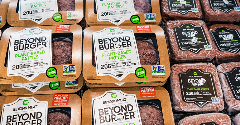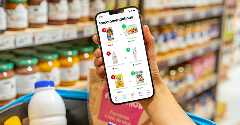News
Clean label for marketeers
25 Apr 2018The drive towards clean labels has led many food makers to reformulate with ingredients that are considered easier to understand, but some have taken a different route, preferring to explain the purpose of ingredients to consumers.

Explaining ingredients is an alternative way of looking at what transparency and clean labels really mean, helping to educate consumers about the function, source and safety of existing food ingredients, rather than accepting that a low level of knowledge is unchangeable. Explanatory notes might show up on food packaging, perhaps spelling out that ascorbic acid is another name for vitamin C and that its purpose is to extend shelf life – but this can be done online as well as on-pack.
Digital tools to improve transparencyAlthough packaging is an obvious place to talk about ingredients, consumers are also open to digital information sources, solving the problem of potentially cluttered product labels.In the United States, younger consumers in particular use apps and QR codes to check specific product information, with 72% saying they are “somewhat to very likely” to use a QR code in the supermarket, according to a recent study from the Food Marketing Institute. Unfortunately there is little information about European use of such information, but research from Label Insight has found nearly two-thirds of U.S. consumers would switch brands if they found one with ingredients they understood better. However, if manufacturers provide easy-to-understand definitions for the ingredients in their products, 84% of those surveyed said they would have more trust in food companies.Beyond clean label concernsProviding information, rather than reformulating, also helps address consumers’ other concerns. Although many shoppers say they want more natural foods and beverages, they may have assumptions about other attributes, such as food safety, long shelf life and low price. It is possible that removing an ingredient could affect these other characteristics – and that they may be more important to consumers than a short ingredient list.Manufacturers have been helped by the increasing number of ingredient suppliers that are taking note of consumer desire for greater transparency. Gelnex Gelatins highlights its supply chain transparency as a differentiating factor in the gelatine industry, for example. And flavour and fragrance firm Symrise emphasises the importance of sustainable raw ingredient sourcing as a way to help manufacturers meet demand for transparency and clean labels.Of course there are some aspects of the clean label trend that no amount of explanation will override, and the drive toward more natural, easy-to-understand ingredients is about more than comprehension alone. However, if an existing ingredient fits with broader food trends, engaging with consumers could be a way to address concerns without having to find a substitute.Related news

PepsiCo formulates ‘naked’ Cheetos and Doritos products
31 Dec 2025
US food giant PepsiCo has launched its Simply NKD range, a move it says reimagines its popular products with new formulations free from artificial flavours, dyes, and colours.
Read more
Debate over ban on ‘meaty’ names for plant-based products reaches stalemate
26 Dec 2025
The debate over a ban on plant-based products using “meaty” terms has reached a stalemate, leaving manufacturers in limbo and still facing overhauls to their marketing and packaging.
Read more
Has ‘clean’ had its day?
22 Dec 2025
Wielding clean-label positioning and fortification as marketing levers is a dangerous strategy, and brands would be better off explaining the hows and whys of the ingredients in their products, say experts.
Read more
Bigging up bean-based products and consumption in Britain
19 Dec 2025
Non-profit organisation the Food Foundation has launched a campaign, “Bang in Some Beans”, designed to increase UK consumers’ legume consumption.
Read more
Ingredient transparency key to success in European natural health market
12 Dec 2025
Europe’s $40.7 billion supplements market is growing fast, fuelled by demand for products that support healthy ageing, mental wellbeing, and preventive health, say experts.
Read more
Sorghum emerges as better-for-you hero ingredient
9 Dec 2025
With the launch of Novak Djokovic’s sorghum-based brand, the grain’s popularity in the better-for-you snacking sphere is on the rise, thanks to its nutritional and sensory properties.
Read more
Innovation promise in 'maturing' plant-based dairy alternatives market
8 Dec 2025
Plant-based dairy is a maturing market that still faces significant hurdles around taste, functionality, nutrition, and price, but industry is innovating fast, according to experts speaking at Fi Europe.
Read more
Celebrating the winners of the Fi Europe Innovation Awards 2025
3 Dec 2025
Food industry stakeholders celebrated as the winners of the Fi Europe Innovation Awards were announced at a ceremony in Paris.
Read more
Yuka’s food scanning app helps consumers make healthier choices
2 Dec 2025
Global food scanning app Yuka helps consumers understand the content of their shopping baskets and shapes producers’ reformulation plans.
Read more
Non-UPF Program extends certification scheme to entire food industry
30 Nov 2025
The Non-UPF Program has extended its certification scheme to the wider food sector, championing a move towards healthier consumption habits.
Read more
